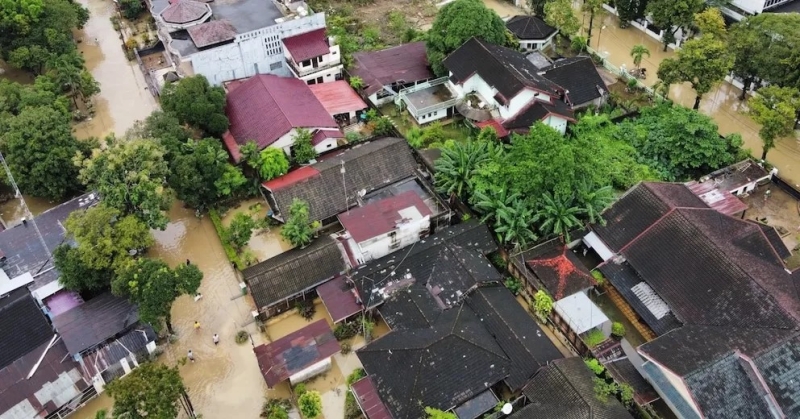- Southeast Asia Floods Kill Over 250, Thousands Displaced |
- Trump Vows to Halt Migration From ‘Third World’ Nations |
- Journos should strengthen themselves to secure rights: Fakhrul |
- Hong Kong’s deadliest fire in a century: How it spread |
- Khaleda ‘moved to Evercare CCU |
Floods and Landslides in Indonesia Leave Dozens Dead

Rescue efforts in Indonesia faced major setbacks on Friday after flash floods and landslides on Sumatra Island left at least 79 people dead and dozens more missing. Damaged roads, collapsed bridges, and limited access to heavy machinery have severely slowed operations.
The disaster was driven by Tropical Cyclone Senyar, which formed in the Strait of Malacca and brought intense rainfall and strong winds across North Sumatra, West Sumatra, and Aceh. Overflowing rivers swept through mountainside villages, submerging thousands of homes. In North Sumatra alone, more than 3,200 houses were inundated, forcing around 3,000 families into government shelters.
Authorities reported 48 deaths and 88 missing across 12 cities and districts in North Sumatra. Mudslides, power outages, and disrupted communications have made it difficult for rescue teams to reach remote communities. In West Sumatra, at least 22 people were killed and 10 reported missing, with more than 17,000 homes flooded and tens of thousands displaced. Farmland, livestock, and public infrastructure have also suffered extensive damage.
In Aceh province, thick mud and falling rocks blocked key roads and delayed the movement of excavators and other vital equipment. Three villages in Central Aceh district reported nine deaths and two missing residents.
Officials warned that unstable weather patterns could prolong the crisis. “We have extended our extreme weather warning due to strong water vapour supply and shifting atmospheric dynamics,” said Achadi Subarkah Raharjo, Director of Aviation Meteorology at Indonesia’s Meteorology, Climatology, and Geophysical Agency.
Floods and landslides are common during Indonesia’s rainy season, particularly in mountainous areas and low-lying floodplains. Search and rescue teams continue urgent operations as affected communities confront the scale of destruction and loss.

